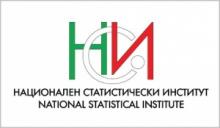In April, the National Statistical Institute of Bulgaria launches the conducting of the survey on “Social Inclusion and Living Conditions 2013”.
Regulation 1177/2003 of the European Parliament and the Council establishes a common framework for systematic production of statistics in the European Union on Income and Living Conditions (hereinafter EU-SILC), which include comparable and timely information on current status and dynamics of income as well as the level and structure of poverty and social exclusion at national and European level. The results are also used for preparing the Annual Report on Bulgaria’s progress on social inclusion and in determining the national goal for poverty reduction implementing the Strategy “Europe 2020”.
The following thematic areas are included in the methodology of the survey:
• Basic demographic and social characteristics of the households and their members: household size, form of ownership of dwelling, age, gender, education, marital status, economic status, sources of livelihood and other data on household members.
• Monetary (money) indicators on income and social stratification of the population: total income and the structure of income sources (from wages, from social transfers and others).
• Non-monetary (non-money) indicators of living conditions: basic data on housing conditions (type and furnishing of the dwelling); problems relating to housing and neighborhood (location); access to education; health status and access to healthcare;
• Economic activity, employment and unemployment of persons aged 16 and more (status, job security, duration of unemployment and others);
• Social services and programs and the participation of the household or its members in them.
The survey is conducted over a four year rotating panel of private households. Every year the panel sample size is about 7200 private households distributed in all areas of the country. The sample consists of four rotational groups and each year one of the rotation groups is dropped and replaced with a new one. Except for the household which has been selected into the sample object of observation are also all its members aged 16 and more. This rotation pattern of a sample provides two types of data:
• cross-sectional (as of the year of observation);
• longitudinal (data for households participated in at least two consecutive years).
In the period April – June 2013 the selected households will be visited by specially trained interviewers to conduct personal interviews and fill in two questionnaires – Household questionnaire and Personal questionnaire. Households are included in the sample using a random selection which ensure the representativeness of the results.
The survey is conducted in all countries of the European Union using common methodology and tools. The obtained results contribute to the assessment of living conditions in the different countries, the structure and distribution of household income and their participation in the social life of the country.
We would like to thank in advance to all households for the cooperation in the presentation of our country in the European community!



